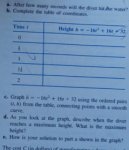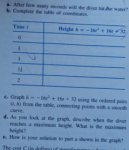allegansveritatem
Full Member
- Joined
- Jan 10, 2018
- Messages
- 962
what does this phrase mean? "How is your solution to part a shown in the graph?"
The following phrase is taken from one of the problems in one of Robert Blixer's algebra text books. I have run into it several timeds but can't find what it means even on Google:
"How is your solution to part a shown in the graph?"
That fragment "part a shown" is strange to me. What does it mean. I can guess but can't parse it grammatically.
The following phrase is taken from one of the problems in one of Robert Blixer's algebra text books. I have run into it several timeds but can't find what it means even on Google:
"How is your solution to part a shown in the graph?"
That fragment "part a shown" is strange to me. What does it mean. I can guess but can't parse it grammatically.


